How To Detect Oil In Water And The Best Ways To Remove It
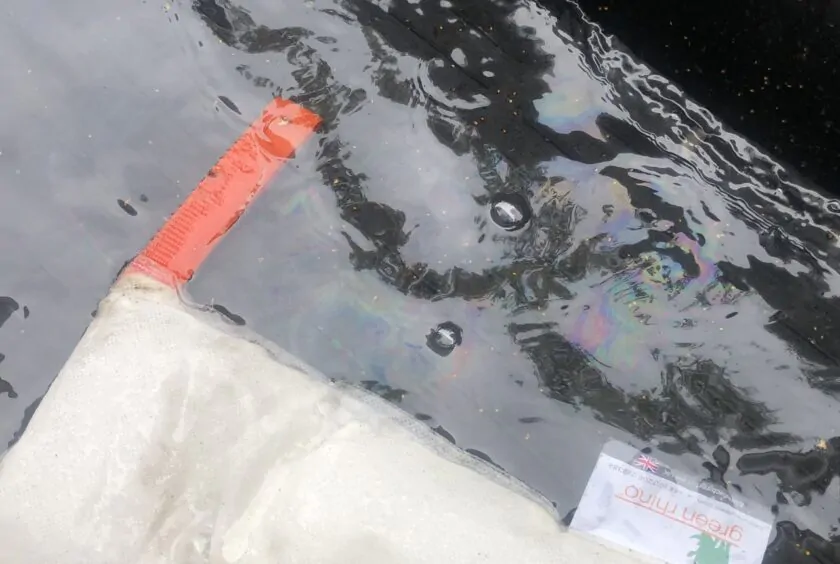
We all recognise the rainbow sheen of oil on water. But what if the concentration of oil is too low to form a sheen, or the oil is dissolved in the water? And what if the rainbow sheen isn’t oil at all? In this short article, we explain how to detect oil in water and some easy ways to remove or contain it.
If you are working in construction, utility maintenance or around transport hubs, oil leaks, oil spills and refuelling spills are commonplace. Legislation is in place which obliges you to prevent contamination of surface and ground waters or to clean up if it does happen.
Most of the time, a rainbow-coloured sheen on top of water is hydrocarbon contamination like oil or fuel. But did you know that there is a harmless bacteria which can form a multi-coloured sheen on the surface of standing water?
The easiest way to check if you’ve got an oil spill or bacteria is to drag a stick through the discolouration. Oil will usually remain as a constant layer on the surface of the water whereas bacterial growth will break up into smaller pieces.
Sometimes oil has been in water for so long that it dissolves. Although there is no sheen on the surface, the water is still contaminated.
How to detect oil in water
So sheen or no sheen, how can you test for hydrocarbon contamination?
Remember using litmus paper at school to test for acids and alkalis? Testing for hydrocarbon contamination is similar, as oil detection strips change colour when in contact with hydrocarbons.
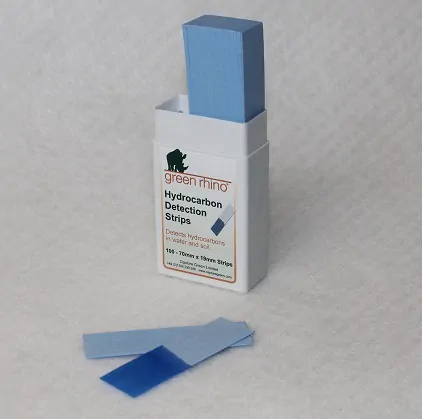
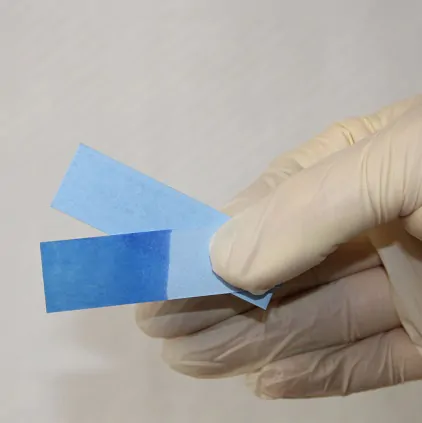
These strips indicate the presence of hydrocarbons by changing colour from light blue to dark blue. Simply wave them around in the water for a few seconds and depending on the concentration of contaminants, the colour change will range from light speckling to instant transformation – so check carefully. The strips work with surface sheens and dissolved-phase hydrocarbons.
Oil detection strips are a low-cost and quick alternative to sending samples away for third-party testing.
Best ways to remove hydrocarbons from water
If you have detected hydrocarbons, you’ll need to clean the water or get a third party waste contractor to remove it. Fortunately, there are some easy ways to clean contaminated water.
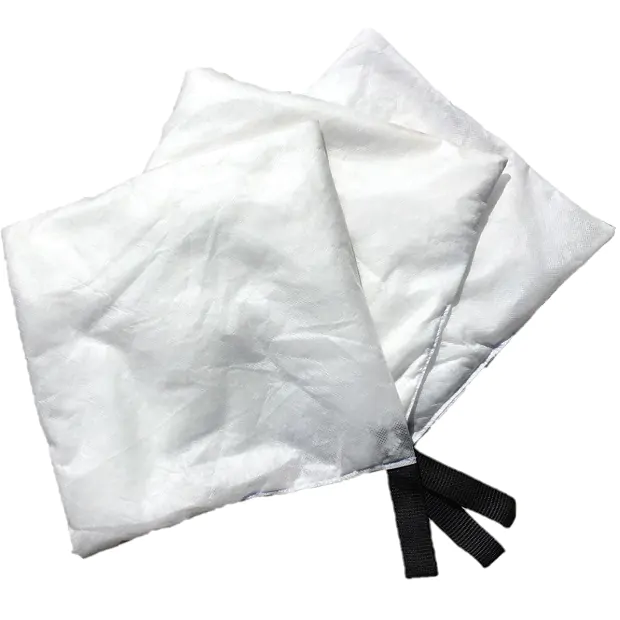
It’s worth distinguishing at this point between small, contained bodies of water – like an excavation or bund – and a large body of water like a lake or flowing water. In an excavation or bund, oil absorbent pillows are a fast and inexpensive way to soak up hydrocarbons. There are two types: those made with traditional absorbents and a newer, more effective type which uses smart polymers.
Traditional absorbents are effectively a sponge. The problem with sponges, however, is that liquids can leak out again when the sponge is saturated. This means that oil can run back into the water and onto your clothing as you remove the pillow from the water. It also means that you’ll need to bag the saturated pillow for disposal before you carry it away from the water.
Smart polymer pillows were designed to overcome this problem. The smart polymers inside the pillow absorb oil and turn it into solid rubber. The oil is thus neutralised and trapped inside the pillow. Once all the oil has been absorbed, saturated pillows can be wrung out before removal and disposal. Only clean water will drain out.
If the cleaned water needs to be removed, from an excavation for example, then it is recommended that you pump it through an oil & sediment filter which will remove any residual contamination.
In a larger body of water – like a lake – or on a river or the sea, oil absorbent booms should be used to contain spills. Ideally they should be used proactively – downstream from a construction site or around boats in a marina or harbour – but they can be a useful reactive measure too. As with the pillows, smart polymer booms are more effective and cleaner than traditional absorbent booms.
Hopefully, this article has shown you how to detect oil in water and then remove it safely and effectively. In all scenarios, common sense should prevail. If a high-volume spillage or leakage has occurred, you should first try and make sure the contamination is contained and then contact the Environment Agency for advice.
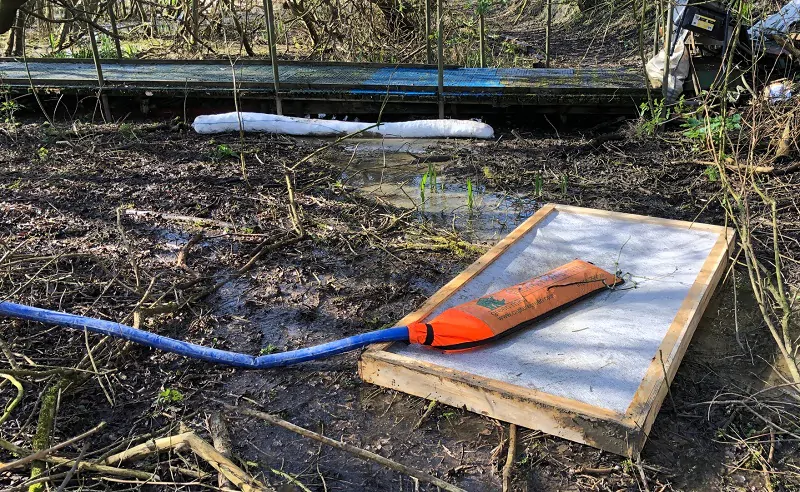
For more information and pricing please call 01206 299388 or email sales@greenrhinoglobal.com.
Find out more:
Oil Detection Strips
Oil Retention Pillows
Oil Retention Booms
Oil & Sediment Filters
